RNSP strongly supports scientists who are interested in beekeeping and try to work for the benefit of the development of this industry. Such an example may be the life and activity of the scientist - Pchelovoda V.G. Kashkovsky.
For a 200-year period of life and development in Siberia, average Russian bees have adapted well to local conditions: long-term harsh wintering and a short active summer season. This is due to the fact that their rectal glands (according to M. V. Bekkin) highlights 2.5 times more catalase than the gray mountain caucasian bee. Our observations are established that mid-Russian bee matties after graduation bribe quickly stop teaching eggs, which allows bee families to prepare for wintering - all born bees have time to fly.
As a rule, after the exhibition of the hives from the wintering and walking bees, the family will first weaken, that is, they die the autumn bees, and then young begin to grow. We observed such a pattern from the gray mining Caucasian, Italian, Kuban, Krain and Carpathian bees and never - at Middle-Russian. This fact can be explained as follows: Bees of other breeds in the cold spring, when the temperature ranges from 0 to +10 ° C, are active, fly out of the hives and dying, and the middlewalls do not fly away even on sunny days. Therefore, after protracted colds, which often last to two months (1984, 1985 and 1986), local families are not only not weakened, but, on the contrary, increase, while families of other breeds often lose half to three during this time quarters bees. This explains that mid-Russian bees always collect more honey from Willow and Yellow Acacia.
The valuable economic feature of medium-Russian bees is rapid development in spring. So, in the Kemerovo region a week after the exhibition, the eggsomeness of the module was 1181-1486 eggs per day, in two weeks on the background of a bribe from willow-raised, rose to 1905-2057 and at the beginning of July reached the highest indicators - 3500 pieces.
High egg production of the module, the large size of the working individuals speaks of the large potential of the bees of this breed, which is confirmed by high medical productivity: in the Kemerovo region, a medical unit was recorded from a family from a family, in Novosibirsk - 325 kg, in the Krasnodar Territory - 430 kg. The famous beekeeper D. I. Ivanov twice received 190 kg of honey on average from the family, and the beekeeper of the collective farm "For Communism" of the Bogotolsky district of the Krasnoyarsk region A. I. Deco in 1965 from 165 bee families gathered 180 kg of gross honey.
In Western Siberia, except for medium-Russian bees, the bees of the Kuban breed was repeatedly imported - in 1924, but most often the gray Mining Caucasian (1926-1928, 1937, 1942, 1950) - to the Kemerovo region, and from 1942 before the start 1980 and in Novosibirsk.
Before the deposition of the bee from the Caucasus, Siberian beekeeping did not know such diseases such as American and European rotches, a bagproof races, bravel, acarpidosis. The above-mentioned diseases appeared with the appearance of venerable bees. After the cessation of Caucasian Zava, the Kemerovo region, only nosomatosis and fall toxicosis were again noted again.
In addition, perennial tests have shown that in conditions of weak and strong honey collection, gray mountain Caucasian bees and their peas in Siberia are less productive.
During the winter there was a significant death of bee colonies in the gray mountain Caucasian, Italian, Carniolan rocks. This is due to the fact that in some years the autumn honey harvest is before the onset of cooling. Under these conditions, the uterus southern species of bees continue to lay eggs almost to the winter. Of them displayed bees already in the cold autumn coming into winter without detour.
Such a family is bad winter. Only in rare years, with the warm late autumn, when the uterus Caucasian bees manage to fly around, wintering is successful. It must be admitted that the massive importation of Caucasian and other bee species in the southern farms usually ends in a year or two the loss of all families.
We conduct tests and Carpathian breed of bees. Pre-she showed excellent results, both in winter and
on productivity. It should be noted that the behavior of bees changes acclimatization, so work on the test Carpathian bees we continued.
During the season, the family replaced about six generations of bees, and the queen is still the same. Therefore, if we consider only bee generation, then in two or three years, they are replaced by 12-18, but it's half-sister and sister, as they come from the same mother. To obtain objective data on acclimatization in this case it is impossible, even though the bees make up the main population of the hive. We take into account only the reproduction of the uterus. Imported queen bees and bee colonies we considered to imported and used two, sometimes three years. Then queens daughters obtained from them (I reproduction). They tested two or three years, and then prepared from these ewes-grandchildren (II reproduction) and t. D.
As the table shows, the productivity indicators at local and Carpathian bees close. Only in some years during prolonged cold spring family carpathian breed lost bees because of their activity in cold weather, so when it's warm weather, Central Russian began to collect honey, and the Carpathians - only grow. Another important indicator - roylivost (Table 2.).
From the table it is evident that the bee Central Russian swarming annually (from 4.3 to 30% of families). Karpatskie imported bees swarming slightly (3,2-5,7%). Subsequent reproduction swarmed already annually, and in some years the figure was 20%.
Thus, for acclimatization Carpathian bees in Siberia, they are the first to lose one of its most important signs - neroylivost.
Our perennial work has shown that the most valuable bees for Siberia are Central Russian. They represent the wealth of our country, therefore it is necessary to take urgent measures to protect them and purely breeding. This work is difficult, but performing.
V. G. Kashkovsky.


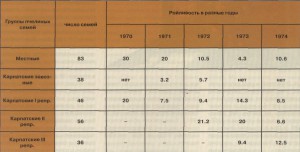
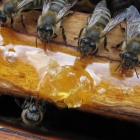

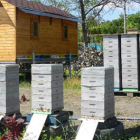
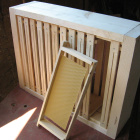
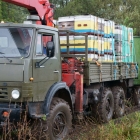
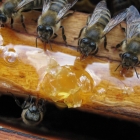
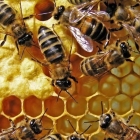
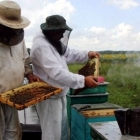
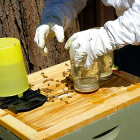
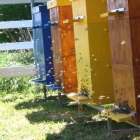
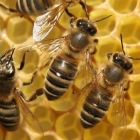
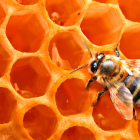
 Start a discussion ...
Start a discussion ...